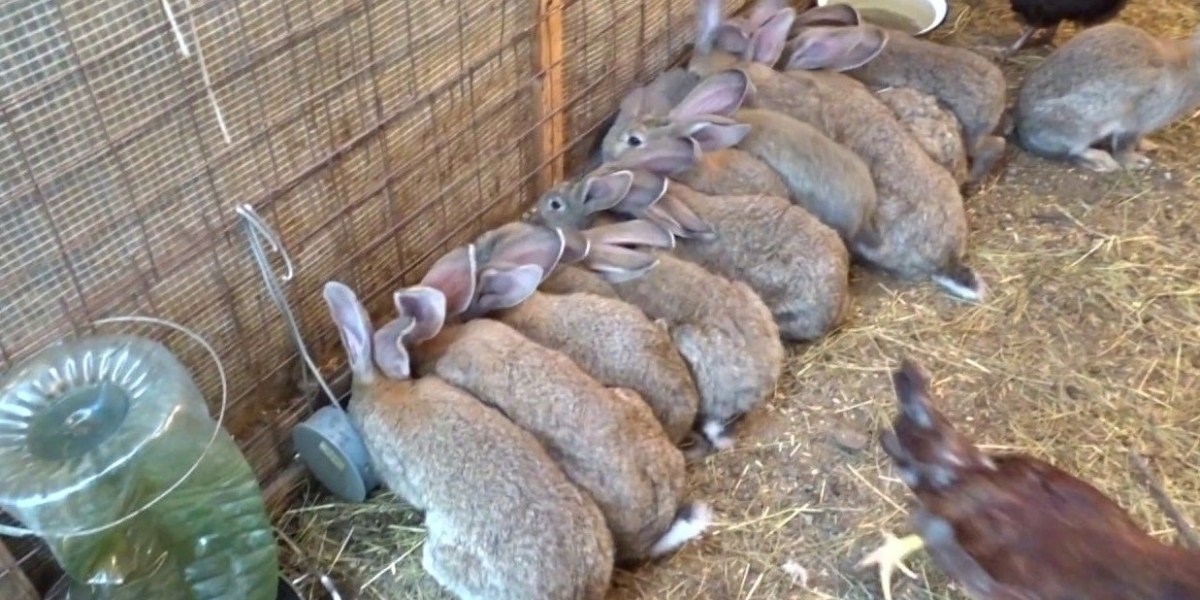Introduction: Rabbit farming has gained popularity as a lucrative and sustainable agricultural venture. Whether you're a seasoned farmer or a beginner looking to enter the world of animal husbandry, raising rabbits can be a rewarding experience. This article will provide a comprehensive guide to breeding and feeding rabbits, covering key aspects of their care and management.
Breeding Rabbits: Successful rabbit breeding involves careful planning, proper selection of breeding pairs, and meticulous attention to their well-being. Follow these essential steps to ensure a successful rabbit breeding program:
Selecting Breeding Stock:
- Choose healthy and genetically sound rabbits for breeding.
- Consider factors such as breed characteristics, size, and temperament.
- Avoid inbreeding by diversifying the gene pool.
Breeding Environment:
- Provide clean and spacious cages or hutches for breeding pairs.
- Ensure proper ventilation and protection from extreme weather conditions.
- Create a stress-free environment to encourage successful mating.
Breeding Management:
- Introduce the breeding pair gradually to prevent aggression.
- Monitor mating behavior and ensure successful copulation.
- Keep a record of breeding dates for accurate gestation predictions.
Pregnancy and Birth:
- Provide a comfortable nesting box for the pregnant doe.
- Monitor the doe's health and adjust her diet as needed.
- Be prepared for the birth and provide postnatal care for the kits.
Weaning and Separation:
- Separate kits from the mother after they are weaned (around 4-6 weeks).
- Provide a balanced diet for the growing kits.
- Monitor the health and development of the young rabbits.
Feeding Rabbits: Proper nutrition is essential for the health and productivity of rabbits. A well-balanced diet should include a mix of hay, pellets, fresh vegetables, and clean water. Follow these guidelines for feeding your rabbits:
Hay:
- Provide unlimited access to high-quality hay, such as timothy or alfalfa.
- Hay is essential for digestive health and dental wear.
- Ensure hay is free from mold and contaminants.
Pellets:
- Choose commercial rabbit pellets that are specifically formulated for their age and purpose (e.g., growth, maintenance, or reproduction).
- Gradually introduce pellets to young rabbits, adjusting the quantity as they grow.
- Monitor weight and adjust pellet intake accordingly.
Fresh Vegetables:
- Introduce a variety of fresh vegetables gradually.
- Include leafy greens like kale, spinach, and lettuce.
- Avoid feeding excessive amounts of high-oxalate vegetables.
Water:
- Provide clean and fresh water at all times.
- Use water bottles or bowls, ensuring easy access for the rabbits.
- Monitor water consumption to detect any health issues.
Supplements:
- Consult with a veterinarian to determine if supplements are necessary.
- Vitamin and mineral supplements may be required based on the rabbit's age, health, and diet.
Conclusion: Rabbit farming can be a rewarding venture when approached with knowledge and dedication. By understanding the basics of breeding and feeding rabbits, you can create a thriving rabbitry. Remember to prioritize the health and well-being of your rabbits, and seek guidance from experienced breeders or veterinarians when needed. With proper care, your rabbit farm can become a sustainable and profitable enterprise.








